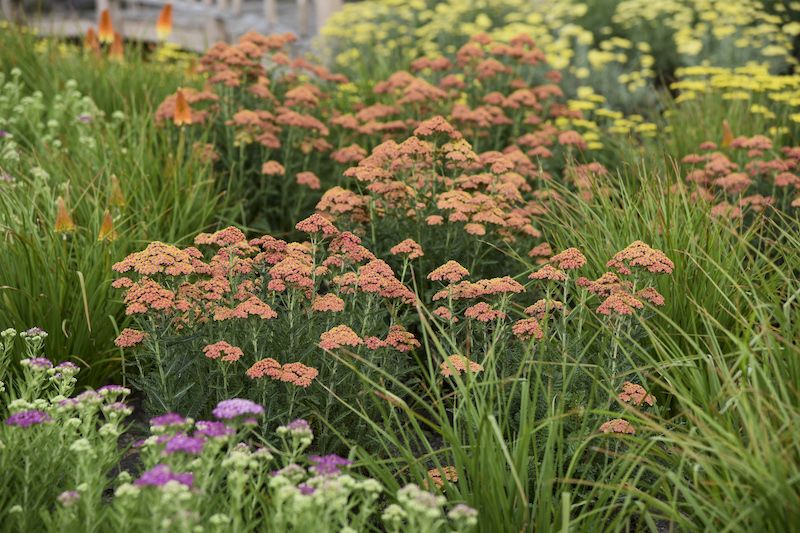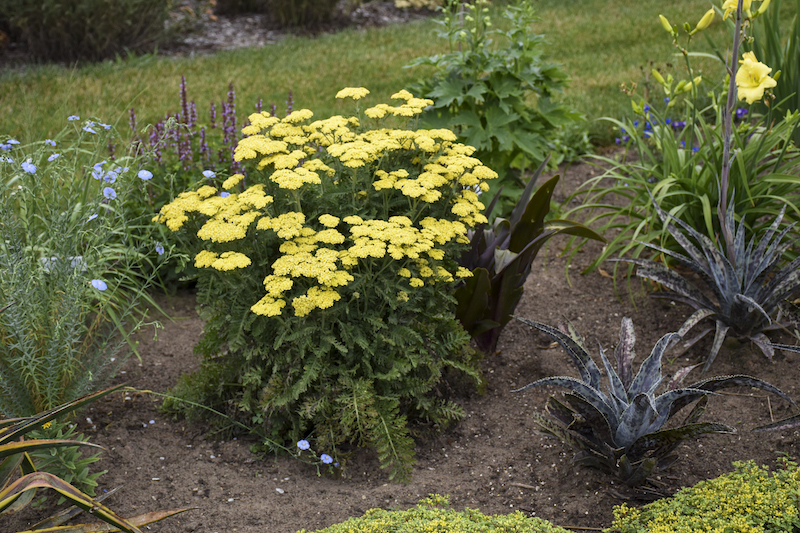The scientific Latin name for Yarrow is Achillea millefolium and it is in the Asteraceae family, which is a very diverse group that includes plants like Daisy, Sunflower, Thistle, Artichoke, and believe it or not, Lettuce. All of these plants have specific needs, but the main thing they have in common is the ability to thrive in poor quality soil in full sun. Except for the lettuce, Asteraceae plants are drought tolerant and easy to grow when properly planted from the start.

What You Need To Plant Yarrow
The materials that you will need to have available for planting Yarrow:
- Small head shovel or transplanting spade
- Compost or other organic material to be used as mulch
- Water source nearby or watering can
- Location in full sun with excellent drainage
- Hand pruners
Where To Plant Yarrow
Yarrow needs at least 6 hours of full sun exposure to maintain vigorous growth and blooming. The soil needs to be on the lean side with a pH between 6.0 (slightly acidic) to 8.0 (slightly alkaline). Soil that is too rich will cause very leggy stem growth that is susceptible to pests and disease. Pot-grown perennials should always be planted at the same depth they were grown in the pot, not any deeper.

Yarrow Spacing
Yarrow is a plant that is much wider than it is tall and has a tendency to spread by underground rhizomes and by self seeding. Planting multiple plants at the beginning will give the greatest impact. Multiples of 3 or 5 plants spaced in an alternating pattern or triangle shape will fill in an area the quickest. Plants need to be spaced at 1-2 feet on center, depending on the overall size of the variety. The root systems of Yarrow are quite shallow and fibrous, and are not invasive or destructive to foundations or sidewalks. Yarrow makes a great edging plant in full sun, like along a driveway, which might be too exposed for other plants.

Steps To Planting Yarrow
Step 1 - Choose a location that has full sun or at least 6 hours of full sun exposure
Step 2 - Dig a hole that is as deep and wide as the pot the plant is growing in
Step 3 - Gently take the Yarrow out of the pot
Step 4 - Tease out any roots that are circling the pot or look root bound; this will help the plant's roots expand outward into the surrounding soil and establish better
Step 5 - Fill the soil back in around the plant, making sure to firm it down gently to get rid of any air pockets
Step 6 - Water the plant in well until there is puddling on the soil; allow this to soak in well before going on to the next step
Step 7 - Mulch around the root zone with 2-3 inches of organic material
Step 8 - Cut back any branches that have been damaged or turned brown to clean up the plant
When To Plant Yarrow
Yarrow can be added to the garden at any time of the year. The best time to plant perennials is in the early spring or the early fall. Roots get quickly established in the cooler seasons with less stress on the plant. Ideally, the planting day is overcast or partly sunny. Leaves lose less moisture on overcast days, which will also help reduce any transplant shock. If Yarrow absolutely needs to be planted in the summer, extra irrigation will be needed until the plant is established.
Transplanting Yarrow
Yarrow is a very easy perennial to divide and transplant. The roots are very fibrous and easy to cut through with a spade or a small garden knife. Digging out the overgrown plant will not be difficult because the roots are shallow. After digging the clump up, you can see natural divisions between the smaller, new plants. Chop with a spade or cut alongside these new plants and make sure to include as much attached root mass as possible.
Replant the new Yarrows as quickly as possible to reduce transplant shock. Water the plants in well and provide extra irrigation until the Yarrow is established and has started putting out new growth. Generally the best time of year to divide and transplant is the fall before the plant has begun to go dormant.
 |
Author Robbin Small - Published 7-7-2022 |
